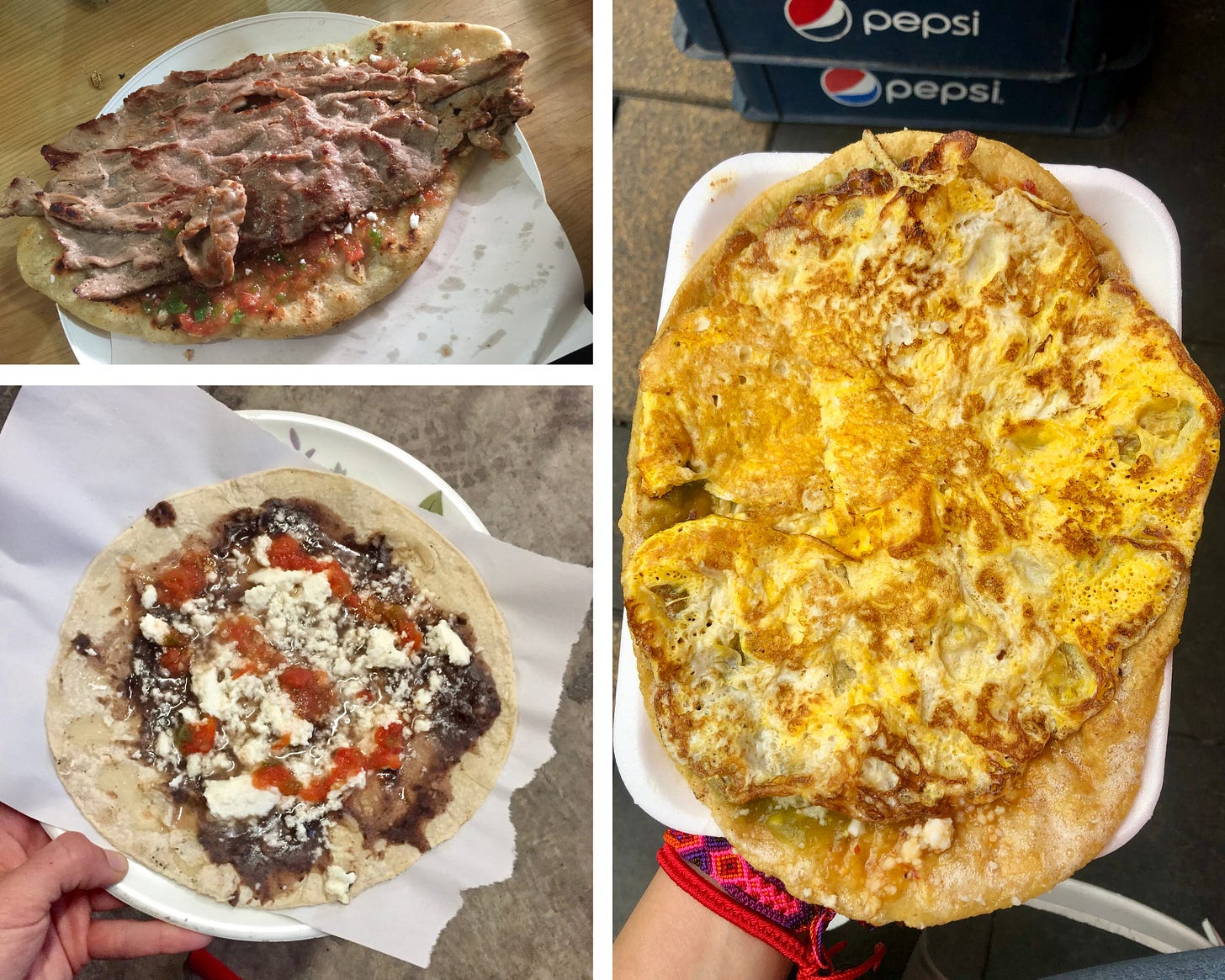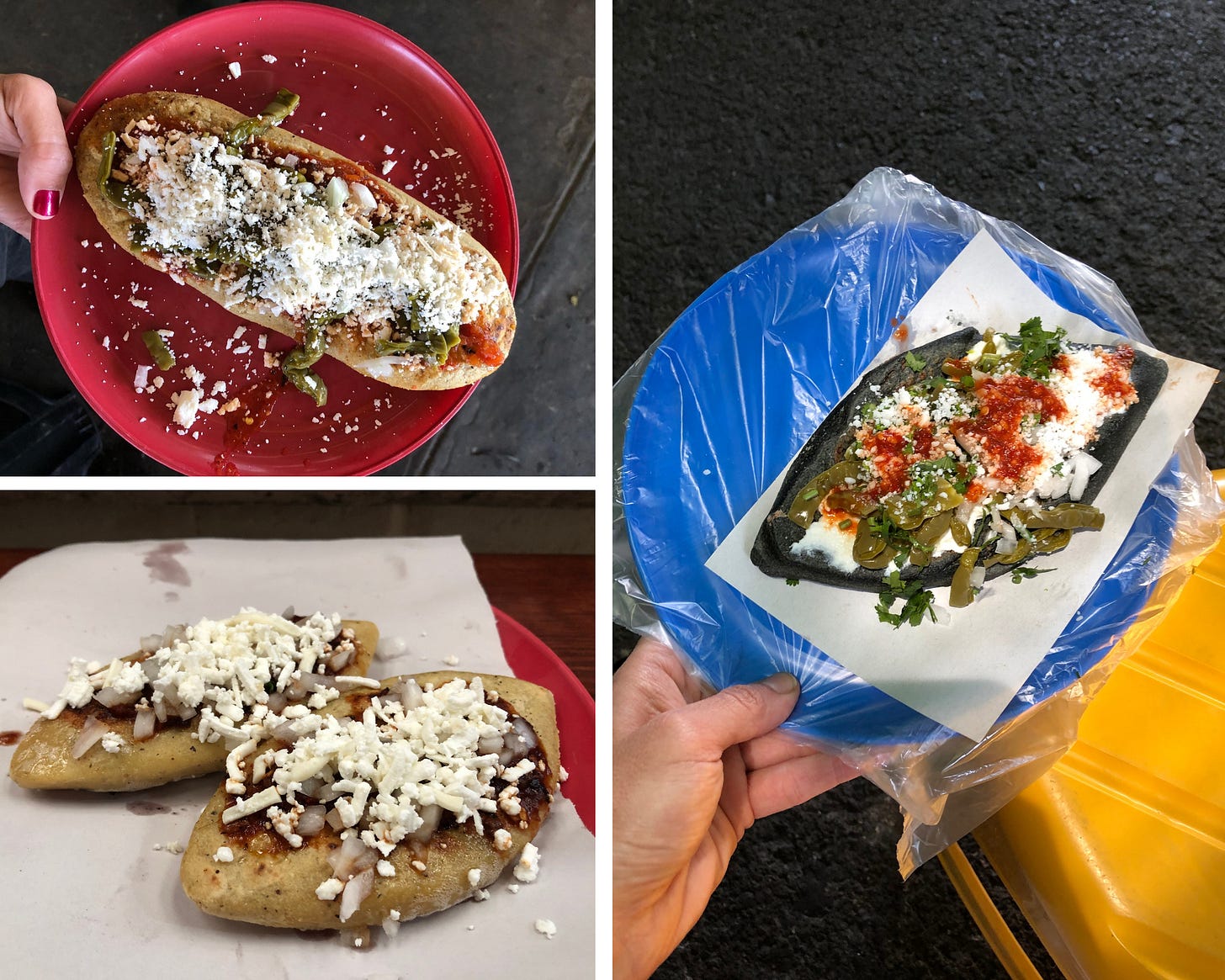Bread, Circus, and Garnachas: A Reflection on Food and Power
Popular Mexican Food
When I started this newsletter, I decided to write it only in English for three basic reasons. First, because Substack was a relatively new platform at the time, and its community was almost entirely English-speaking. Second, because, like it or not, English is the number one language for exchange between countries and cultures, and under that logic, it seemed more interesting to share recipes, stories, and perspectives from a Mexican writer-cook with people from different parts of the world. Third, because back then AI translators weren't nearly as incredibly accurate as they are now (even though I started translating this newsletter before the emergence of ChatGPT), which makes any translation and editing task much faster and more efficient today.
All this to tell you that I recently watched a food series that —for all the right reasons— reminded me of one of the first and most-read posts I published during that early English-only phase of Atole. I decided to translate it (with a light re-edit), because beyond my original rant, it remains important to keep shining a light on what continues to be rendered invisible —something this series manages to highlight with lightness, wit, and sense of humor.
This and more is Santas Garnachas (because, while the stories in Street Food: Mexico stand strong on their own, the production — and especially the script — of Santas Garnachas are simply superior): the series that restored my faith in shows about Mexican cuisine.
Here, it’s real experts — not a select group of foodie “influencers” (as happens in Las Crónicas del Taco and other similar shows) — who get to weigh in: everyday people.
Santas Garnachas is a full celebration of Mexican culinary ingenuity; not just in terms of creation, technique, and flavor, but also when it comes to popular language and the playful banter surrounding it, always sprinkled with regionalisms and local jokes: with cheese or without, flour tortilla or corn, green salsa or red, fried or cooked on the comal, with oil or with lard... and so on.
Although I must say that I don’t fully agree with the series’ definition of “garnachas” — I lean more toward the interpretation of Doña Azucena or La Güera Poblana (you’ll meet them if you watch the show) — in the sense that, for me, each dish has its name. The only word that really encompasses them all is antojitos. If anything, being a bit more flexible, I believe that grease (preferably pork lard) and corn are non-negotiable elements of what makes a garnacha — a kind of subcategory of antojito, embodying all the goodness and healthiness of Mexican culinary nature, but with a slightly sinful twist. It’s not grandma’s cooking — it’s not the cozy comfort of home — it’s the street’s embrace: that guilty, delicious pleasure we’re willing to travel across town for.
It’s not that I want to pigeonhole things — one of the series’ most charming aspects is that it leaves space for interpretation and acknowledges both geographical and personal limits — but I do think that there are certain semantic fields we should try to capture in order to understand each other better. In the case of quesadillas, for example, I agree they can have cheese — or not — because I’m chilanga (from Mexico City) and, in my city's context, that's correct. As I once wrote: a city where quesadillas don’t necessarily have cheese isn’t being stubborn; it’s a city with imagination. Likewise, when I’m in my father’s homeland (Oaxaca), I fully respect the custom of calling them empanadas even if they have no bread — even if that feels even more absurd to me.
Above any definition, what matters most about Santas Garnachas is that, without even trying, it highlights some of the most intrinsic and resilient values of our people: family work as the core of the economy — without divisions or hierarchies — where both efforts and rewards are focused on the common good; a deep sense of hospitality, human warmth and simplicity, humility, good humor above all, the slow and steady effort that eventually bears fruit, and the love for what we do as the true source of satisfaction.
It also shines a light on true Mexican ingenuity: natural, spontaneous creativity without pretension, born from something as simple as a children’s game and capable of putting entire towns and cities on the map — like San Antonio de las Alazanas, Land of Dinosaurs, or Rinconada, Veracruz, a.k.a. Garnachilandia.
Above all, through an everyday example — the women who sell quesadillas and street food (in this case, Natalia and Guadalupe) — it reveals something profoundly meaningful: the unbreakable bond between our culture and corn.
It’s no coincidence that the masa they use often comes from their own milpas, grown in the rural areas of Mexico City or its outskirts. At a time when “organic” has become a luxury and debates over genetically modified corn threaten the richness of our native seeds, it feels almost miraculous that this ancestral tradition remains alive.
GARNACHAS ESTILO RINCONADA VERACRUZ
Here my humble homemade attempt to recreate Doña Azucena’s garnachas from Garnachería Carolina in Rinconada, Veracruz. Further down, the list of places where all the above-photographed delicacies are served.
Keep reading with a 7-day free trial
Subscribe to Atole Newsletter to keep reading this post and get 7 days of free access to the full post archives.








